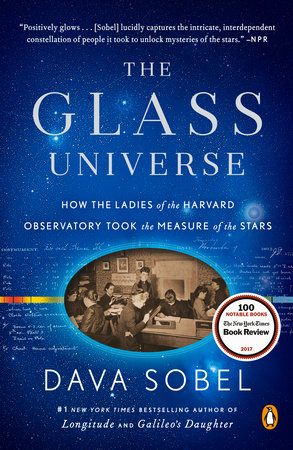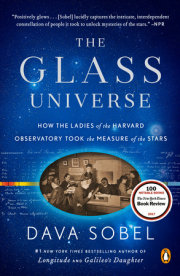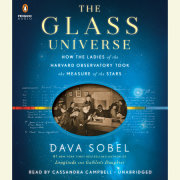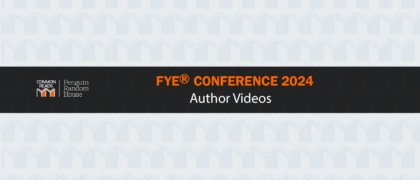Miss Cannon had classified one hundred thousand stars when she set the work aside to spend the summer of 1913 in Europe with her sister, Mrs. Marshall. They planned to attend three major astronomy meetings on the continent, plus all the banquets, garden parties, excursions, and entertainments that such international congresses entailed. On her previous trip to Europe, with her friend and Wellesley classmate Sarah Potter in 1892, Miss Cannon had made the grand tour of popular tourist destinations, camera in hand. This time she would go as a respected astronomer and the only female officer in her professional organization. At the 1912 meeting of the Astronomical and Astrophysical Society of America, the members had voted to change their name to the American Astronomical Society and to make her their treasurer. Now she would seek out her foreign colleagues, many of whom she knew only by reputation or correspondence, in their native settings.
“There are no women assistants,” Miss Cannon noted of the Royal Observatory, Greenwich. Travel broadened her appreciation for the singularity of Harvard’s large female staff, although she easily befriended men wherever she went. At Greenwich, “Without the slightest feeling of being out of place, without the smallest tinge of embarrassment, I discussed absorbing work with one and another.” That evening the astronomer royal, Frank Dyson, called for Miss Cannon and Mrs. Marshall at their London hotel and escorted them to a soiree at Burlington House, the headquarters of the Royal Astronomical Society and four other scientific fraternities. “Never has it been my good fortune to have such a kindly greeting, such hearty good will, such wonderful feeling of equality in the great world of research as among these great Englishmen.” At the society’s meeting a few days later, she gave a formal presentation about her recent investigation into the spectra of gaseous nebulae.
Mrs. Marshall understandably avoided the scientific sessions, at which Miss Cannon inured herself to being the sole woman in a roomful of as many as ninety men. In Germany, she reported, “Not a single German woman attended these Hamburg meetings” of the Astronomische Gesellschaft. “Once or twice, two or three would come in for a few minutes but I was generally the only woman to sit through a session. This was not so pleasant but at the recesses the men were so kind that nothing seemed to matter, and at the luncheon women appeared in great numbers.”
In Bonn, where the Solar Union gathered from July 30 to August 5, the astronomers were treated to a flyby visit of a military zeppelin, a side trip to the Gothic cathedral at Cologne, a riverboat ride up the Rhine, and a gala night in the Bonn observatory that prompted the English-speaking delegates to sing “They Are Jolly Good Fellows” to Director Friedrich Küstner and his wife and daughters. “Luncheon and indeed all meals in Germany,” observed Canadian astrophysicist John Stanley Plaskett, “are a much more important and solemn function than with us and take at least twice the time.”
Pickering, an elder statesman in this community, spoke at several banquets during the week. He shared impressions of his previous stays in Bonn, a city he had long regarded as the world capital of photometry. It was here that the legendary Friedrich Wilhelm Argelander assembled the Bonner Durchmusterung star catalogue and perfected the Argelander method of studying variables by comparing them to their steady neighbors. Argelander’s own small telescope, still mounted at the Bonn observatory, proved an object of veneration for the visiting astronomers.
Only about half the members of Pickering’s Committee on Spectral Classification, first convened at Mount Wilson, had come to the Bonn meeting. Those present included Henry Norris Russell, Karl Schwarzschild, Herbert Hall Turner, and of course Küstner, of the local observatory. They met Thursday afternoon, July 31, to polish their report before Friday’s discussion and vote. The group had considered incorporating some symbols into the Draper classification that would account for the widths of spectral lines, but ultimately rejected the idea. Rather than retrofit the Draper system, they preferred to look forward and explore the possibility of an entirely new design for stellar taxonomy.
On Friday morning Chairman Pickering read the committee’s recommendation to the full assembly at the Physical Institute. He proposed postponing “the permanent and universal adoption” of any system until the committee could formulate a suitable revision. In the interim, however, everyone should foster the well-known and widely praised Draper classification. Approval of the resolution was swift and unanimous. Ditto the subresolution regarding a refinement originally suggested by Ejnar Hertzsprung and already practiced by Miss Cannon. It consisted of a zero subscript for lone letters. Going forward, A0 would denote a star of purely A‑category attributes, showing no B tendencies whatever. The new A0 reduced plain A to a “rough” categorization.
At the final session on August 5, the Solar Union dissolved its old committees and regrouped into new ones for the work to be done over the next three years, before they would all meet again in Rome. “When the names of committees were read,” wrote Miss Cannon, “I was very much surprised to find that I was put on the Committee on Classification of Stellar Spectra—and one of the novel experiences of the summer was to meet with this Committee. They sat at a long table, these men of many nations, and I was the only woman. Since I have done almost all the world’s work in this one branch, it was necessary for me to do most of the talking.”
Copyright © 2016 by Dava Sobel. All rights reserved. No part of this excerpt may be reproduced or reprinted without permission in writing from the publisher.







